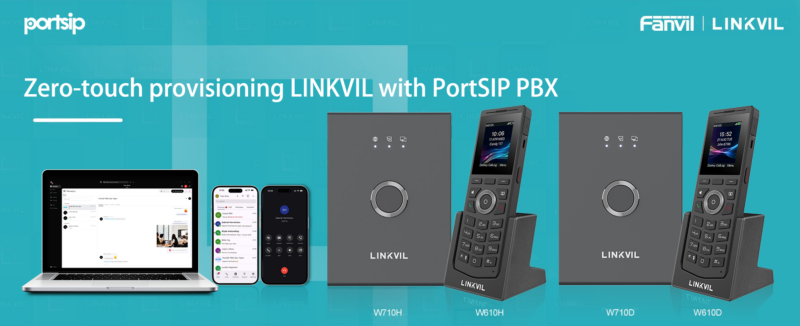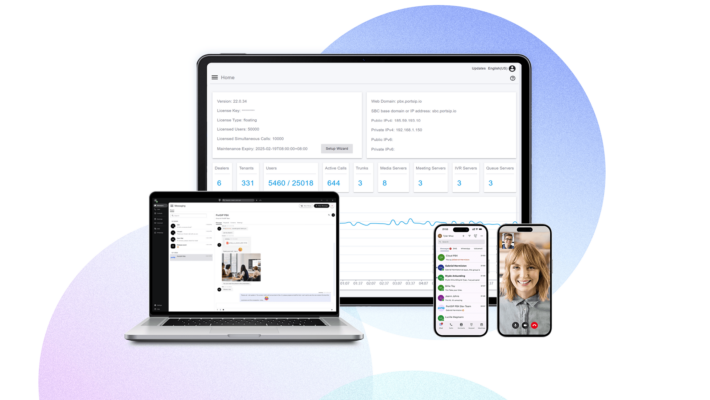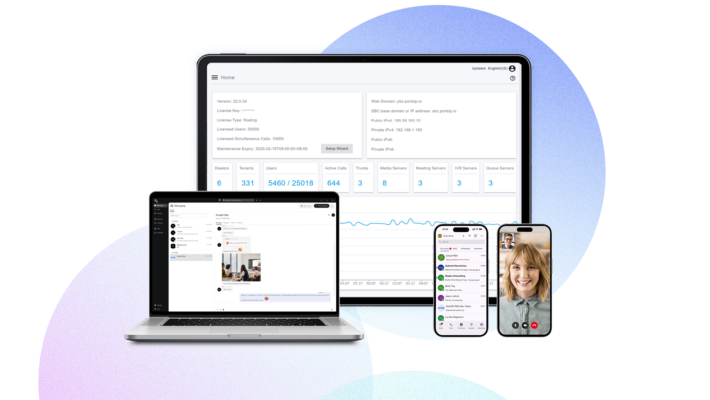SIP PBX is a Private Branch Exchange (PBX) phone system that uses Session Initiation Protocol (SIP) trunking to enable online calls over the internet instead of traditional landlines:
- SIP: A set of signaling standards that allow devices to establish, configure, and terminate communication sessions between endpoints on a network. SIP can also locate devices on a network and connect multiple parties.
- PBX: A business-grade phone system with features for internal and external use.
PBX systems have long served as the backbone of business communication. These Private Branch Exchange (PBX) systems utilize traditional telephony hardware, such as phones, switches, and routers, to establish networks of business phone lines and manage calls. However, these physical PBX systems are inherently limited, offering only legacy calling capabilities.
In an era where 49% of businesses report that outdated technology is impeding their operations, clinging to antiquated telephony is no longer viable. Understanding the workings of these traditional networks and their limitations can pave the way for strategic and effective decisions to enhance your business communication systems.
While PBX forms the bedrock of many businesses’ internal and external communications, there’s no need to remain tethered to analog calls. Your organization can transition to VoIP (Voice over Internet Protocol) phone systems that connect via the internet, bypassing the need for a PBX. Alternatively, you could consider upgrading to SIP (Session Initiation Protocol) trunking for small businesses. This offers digital telephony and VoIP, providing the best of both worlds. Businesses that fully comprehend the relationship between PBX and SIP are better equipped to develop and improve their communication infrastructure.
PBX History
A PBX (Private Branch Exchange) system functions much like a switchboard operator. Switchboards first appeared in 1878, just two years after the invention of the telephone. Selected employees had access to a phone line. When an external call came through, the operator answered and transferred the caller to the appropriate line. This allowed offices to separate their telephone systems from the rest of the Public Switched Telephone Network (PSTN).
During this era, toll charges were a significant concern. The cost of initiating phone calls to colleagues and customers, including personal calls, quickly added up. This was a time long before the advent of cell phones.
Fast forward to the 1970s, the PBX evolved in its functionality. It could automate the routing of calls. Inbound phone calls were answered and “attended” when callers could reach phone extensions. Also, during this time, mail-order catalogs with toll-free phone numbers sparked a higher volume of calls with commercial intent.
By the 1990s, automated telephone systems had become standard in the business world. Enterprises adopted advanced features like Interactive Voice Response (IVR), call forwarding, caller ID, and Voice over Internet Protocol (VoIP).
Not long after administrators installed a PBX, they began eyeing features from the next generation of telecom hardware. Born out of frustration from replacing proprietary equipment, the hosted PBX rose in popularity.
Call centers in the early 2000s pioneered today’s PBX features such as headsets, softphone apps, and call routing. Innovations like these provided significant cost savings compared to analog phone systems.
Today’s IP PBX Business Phone Systems
IP PBX Business phone systems have evolved significantly over the past decade. Today’s systems are digital, secure, and fast. Innovations like VoIP (Voice over Internet Protocol) and cloud technology have empowered even small businesses to leverage enterprise-grade capabilities, without the associated costs and technical teams required to manage an onsite phone server.
IP PBX Business communications today are at the heart of the customer experience. The days of frustrated customers calling into a digital abyss, unable to reach a live person, are largely behind us. Modern IP PBX phone systems are mobile and virtual, enabling employees to work from anywhere while maintaining high-quality calls and online meetings. Today’s IP PBX business phone systems are flexible yet professional, allowing even the smallest businesses to enhance customer experiences.
Today’s IP PBX business phones can be deployed in one of three ways: on-premise, cloud-based, or hybrid—a combination of on-premise and cloud technologies.
On-Premise PBX Phone Systems
While many businesses are moving everything into the cloud, there are strategic reasons why some companies opt for an onsite phone system with locally managed hardware. In essence, these companies prefer local control of their system and choose to own and manage their phone solution onsite. As a capital expenditure (CapEx), an onsite phone system does not incur ongoing costs to finance the solution.
Cloud PBX Phone Systems
A cloud PBX phone system is hosted in the cloud, meaning it’s a virtual phone system that doesn’t require physical hardware onsite to function as a professional phone system. These systems are hosted by a third-party provider and offer a scalable model suitable for small businesses up to enterprise-level companies.
With a cloud PBX phone system, a business subscribes to the service on a monthly basis and pays only for what they need and use. Cloud-based systems allow businesses to easily add new lines or more data. Like VoIP PBX, call data can be strategically used to improve customer communication and engagement. Moreover, the cloud enables businesses to be flexible and mobile.
Hybrid IP PBX Phone Systems
Hybrid IP PBX phone systems blend onsite and hosted solutions, with some elements hosted in the cloud and others onsite. This approach can offer companies the best of both worlds. For instance, a company may want to scale and expand its IP PBX phone system, but its on-premise technology has not fully depreciated. A hybrid system can bridge this gap by providing a solution that works with existing technology, preserving the investment while offering maximum flexibility for the future.
Hybrid systems utilize existing hardware but incorporate a hosted cloud phone solution. This is a popular choice for companies with a large corporate office and multiple remote locations. The business may choose to have onsite control at the main headquarters but support remote locations in the cloud, ensuring a consistent user experience for all.
PortSIP PBX Solution Has Your Back

When weighing the solution for hosting the Cloud PBX, you have to look at your needs today and tomorrow. There are, of course, a number of factors to consider when choosing a phone system solution. Pricing is the most obvious one, but there’s also security, flexibility, and scalability… You have to ask yourself where you want to be in the next year or two and beyond.
Here at PortSIP, we’ll walk you through everything, including free porting of your existing solution. We’ll help you select the right VoIP desk phones that meet your client’s budget and everyday business needs. We cover all of these bases, and its fast deployment means it can be set up in minutes, anywhere in the world. Add phone lines, swap numbers, and more—in real time, then you can run your cloud PBX service like some large service providers, for example, Nextiva, RingCentral, Vonage, and Dialpad.
In the age of the cloud, you cannot keep inching along with a legacy PBX. Your traditional PBX solution costs you more than it’s saving.
Take advantage of the PortSIP Solution and the freedom to work from anywhere. PortSIP PBX lets you focus on serving your customers, not trying to figure out the system. You can leave the rest to us.




